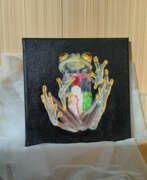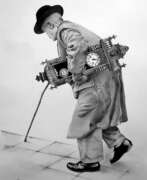Photorealism

Photorealism
Photorealism is an American art movement that began in the 1960s, known for its use of photography as a blueprint for creating remarkably illusionistic paintings. This style is characterized by its precision and commitment to replicating the photographic image with such detail that the paintings often appear more real than the photographs themselves. Photorealism stands as a counterpoint to abstract movements, embracing the banal and everyday scenes with an emotional neutrality that echoes Pop Art's fascination with the mundane.
The movement's progenitors, such as Richard Estes and Chuck Close, employed techniques that enabled them to transfer the photographic image onto large canvases, capturing every minute detail with technical virtuosity. Their subjects—urban landscapes, portraits, and still lifes—were rendered with such exactitude that they questioned the very nature of reality and representation in art.
Today, Photorealism continues to influence contemporary artists, who push the boundaries of realism through advancements in technology and technique. Esteemed works by Photorealist artists adorn the walls of prestigious institutions like the Museum of Modern Art in New York, attesting to the movement's enduring significance in the art world.
For collectors, auctioneers, and art experts, the mastery of Photorealism offers a unique investment in precision and hyperreality that is unparalleled in other movements. To receive updates on the latest sales and auction events featuring Photorealist works, sign up now. Our updates ensure you're informed of new opportunities to acquire pieces from this exacting art form.
| Country: | America, Europe, USA |
|---|---|
| Start of the period: | 1960 |







